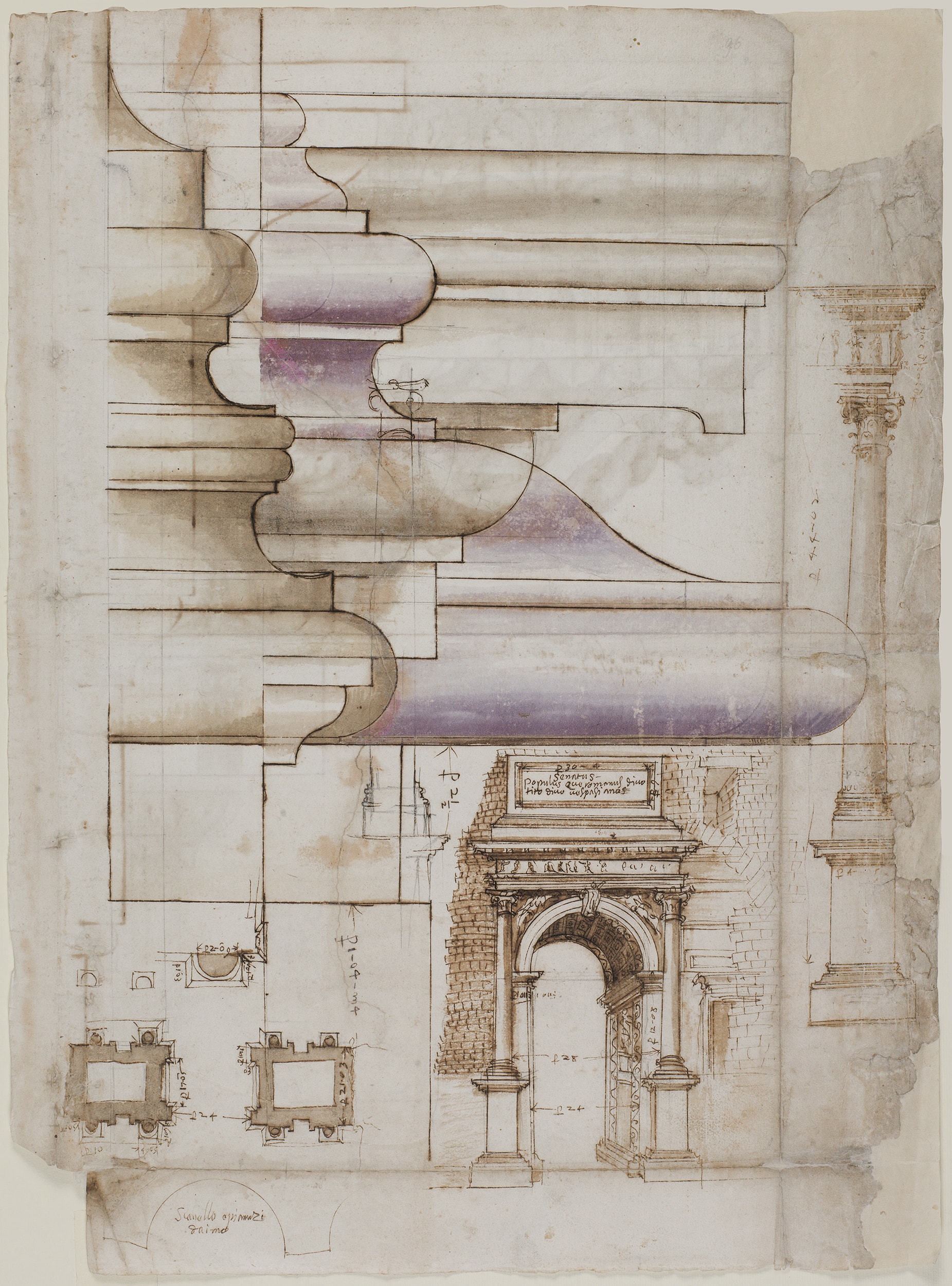Between 2014 and 2017, numerous drawings from European and American collections were added to the Census database. The focus was on drawings of ancient architecture from the early to the late 16th century.
One of these was the so-called ‘Sangallo Circle Sketchbook’ in the Fogg Art Museum, Cambridge, MA (inv. 1932.271), which is related in terms of its authorship and date to drawings in the Uffizi from the circle of Antonio da Sangallo the Younger. The starting point for entering data on this sketchbook was the catalogue of drawings compiled by Howard Burns for the exhibition ‘Raffaello architetto’ (1984). Forty folios were recorded (recto and verso), of which a total of sixty individual drawings were linked to sixty-three monument records.
The codices with drawings by Alberto Alberti in the Istituto Nazionale per la Grafica in Rome were also added in their entirety to the Census database. These are four volumes (vol. 2501 A, vol. 2501 B, vol. 2502, vol. 2504) in which Alberti (who was primarily a wood carver), recorded antique architectural details, and occasionally also entire buildings. The extraordinary diligence of his recordings, which include measurements as well as written identifications and locations of antique monuments, has enriched the Census database. The basis for this project was the edition of the Alberti codices by Giovanna Maria Forni (1991). 103 folios were recorded (recto and verso), of which a total of 341 individual drawings were linked with 500 monument records.
Another focus of the project was a complex network of copies and parallel copies of architectural drawings from the second half of the 16th century, which are now scattered across various collections. Larger groups that belong to this network are in the Metropolitan Museum New York (Scholz and Goldschmidt Scrapbooks) and in the National Museum of Stockholm (Cronstedt Collection); others are in collections in Munich, Stuttgart, Paris, Windsor, Florence, Naples and Oxford. The drawings in this constellation are related to both ancient and modern architecture and have so far only been examined in smaller groups and with regard to individual details. As a preparation for the project, the Census brought together experts in different areas of the network to a workshop, where they discussed their interrelationship, dating, and attribution, as well as the original contexts in which these drawings were created.
As part of the project, the Goldschmidt Scrapbook was added: 95 sheets were recorded (recto and verso), and a total of 265 individual drawings were linked to 321 monument records. Eleven sheets were added from the Codex icon. 209e of the Bayerische Staatsbibliothek München, which contains parallel copies of drawings in the Cronstedt Collection in the National Museum, Stockholm.
In addition, the Palladio material stored in the Royal Institute of British Architects (RIBA, London) has been fully incorporated into the Census database.
The drawings of the Codex Destailleur B in the Hermitage in St. Petersburg and numerous related parallel copies in Amsterdam (Rijksmuseum), London (Courtauld Gallery, Blunt Collection), Naples (Biblioteca Nazionale) and Berlin (Kunstbibliothek) were also edited.
Codex Chlumczansky (Prague, National Gallery)
Codex S. IV. 6 (Siena, Biblioteca Comunale)
Codex B.R. 228 („Zibaldone“ of Buonaccorso Ghiberti; Florence, BNC)
Cod. icon. 209e (München, Bayerische Staatsbibliothek)
Cod. F.N. II.I.429 (Florence, BNC)
Ms. 764 (Padua, Biblioteca Universitaria)

Alberto Alberti, Codex C, Rome, Istituto Centrale per la Grafica, vol. 2502, fol. 96 r